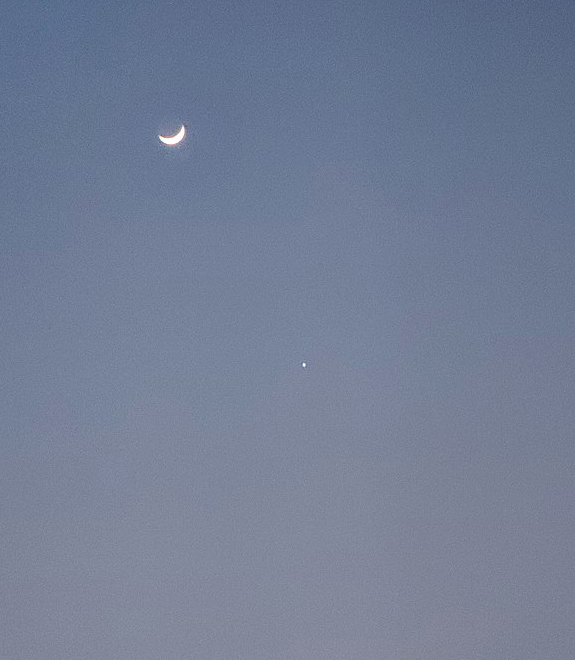Science Snippet:
Explore Jupiter

Jupiter is much farther away than Mars. Despite this, it is currently close to 40 times brighter. In fact, Jupiter is the fourth brightest object in the sky after the sun, the moon, and Venus.
How can Jupiter be so much brighter than Mars? Jupiter is much larger than Mars. In fact, Jupiter contains 71% of all the mass of the solar system (excluding the sun). 1,300 planets the size of Mars would fit into Jupiter. Jupiter is also constantly shrouded in highly reflective clouds. These are the main cause of Jupiter’s brightness in our sky. Since Jupiter is always so far away, it does not brighten and dim as dramatically as Mars.
The distance between Jupiter and Earth ranges from about 400 to 600 million miles. Right now, Jupiter is around 480 million miles away. Let’s imagine that miles are inches. Using this scale, we could walk across the United States in about 75 steps. It would take around 900 steps to walk all the way around the Earth at the equator. It would take around 16 million steps to walk to Jupiter. That’s about 106 days of walking day and night without breaks at an average pace. If you only walked a realistic amount every day (20 real miles or 1267200 inches), it would take 381 days to take 16 million steps. Of course, if you actually wanted to walk the distance to Jupiter, it would take over 67,000 years!
Currently, the best time to see Jupiter is in the morning in the southeast. Jupiter is so bright that it should still be visible even after most of the stars have faded as the sky brightens. Jupiter will be visible all the rest of this year. Through September, it will be visible in the morning. For the rest of the year, it will appear in the evening sky. If you find Jupiter, try looking at it with binoculars or a telescope. Even binoculars should reveal a few small star-like points of light near Jupiter. A few hours later, you should be able to tell that the points of light have moved. They are not stars but some of Jupiter’s moons. Four of Jupiter’s moons are large enough to find using binoculars or small telescopes, though they are not always visible at the same time. At any given time, some of the may be behind or in front of Jupiter from our point of view.
The four largest moons of Jupiter are fascinating worlds in their own right. Io is the closest moon to Jupiter. It is slightly larger than our moon. Unlike most places in the solar system, Io has active volcanoes. For its size, Io is more volcanically active than Earth! Io’s surface is pulled in and out as Jupiter’s gravity tugs it one way while the other moons pull it the other way. Io’s volcanoes have built up impressive mountain ranges. Some of its highest peaks are taller than Mount Everest. Farther out from Jupiter is the moon Europa. Europa is the smallest of the four moons, slightly smaller than our moon. Europa is covered in a thick layer of ice. Far under the ice, some of the water may form a liquid ocean. Because of its icy surface, it is the smoothest object in the solar system, without any mountains or valleys. Europa also has an oxygen atmosphere. But this atmosphere is so thin that the oxygen is only a trace. The next moon out from Jupiter is Ganymede. It is the largest moon in the Solar System. Ganymede is larger than the planet Mercury and about three-fourths the size of Mars. Ganymede has a liquid iron core and a large internal ocean. This internal ocean may contain more water than all of Earth’s oceans combined. Farthest from Jupiter is the moon Callisto. Callisto is smaller than Ganymede but still as large as the planet Mercury. Callisto is the most heavily cratered object in the solar system. Like Europa and Ganymede, Callisto may also have an ocean far under its surface.
Jupiter is a fun planet to explore because you can see five different worlds at once. Watching the moons revolve around Jupiter is an excellent way of seeing movement in our solar system.
